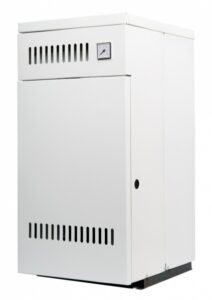When it comes to choosing a new furnace for your home, the array of efficiency ratings can feel overwhelming. What do all these numbers mean, and how do you decide which furnace is right for you?
In this guide, we’ll break down furnace efficiency ratings, explain how they’re measured in modern units, and offer advice on choosing the optimal efficiency level for your needs. You’ll be more informed when you need a furnace replacement in Monument.
Understanding Efficiency Ratings
Furnace efficiency is measured by the Annual Fuel Utilization Efficiency (AFUE) rating. AFUE represents the percentage of fuel that is converted into usable heat for your home. For example, a furnace with an AFUE of 80% converts 80% of the fuel it consumes into heat, while the remaining 20% is lost through combustion gases exhausted out the flue.
The Range of Efficiencies
Modern furnaces come with a variety of AFUE ratings, ranging from standard to high efficiency. Standard efficiency units typically have AFUE ratings between 80% and 85%. Mid-efficiency units fall in the 86% to 90% range. The highest efficiency furnaces boast AFUE ratings of 90% and above. These units maximize fuel conversion into heat, minimizing waste. While high-efficiency furnaces come with a higher initial investment, they promise significant energy savings over time. Many of these units meet or exceed ENERGY STAR requirements, making them environmentally friendly choices that contribute to energy conservation.
Weighing the Costs
While high-efficiency furnaces may seem like the obvious choice for maximizing energy savings, it’s essential to consider the upfront costs. High-efficiency units often come with a higher price tag, and the payback period for the additional investment can take several years. Before making a decision, calculate the potential energy savings over time and compare it to the extra cost of the unit.
Choosing the Right Efficiency Level
To determine the right efficiency level for your home, consider factors such as the climate, local energy prices, and how long you plan to stay in your current residence. In colder climates, such as here in Colorado Springs, where the furnace runs more frequently, a higher AFUE may be more cost-effective in the long run. However, a mid-efficiency unit might strike the right balance between cost and savings for some local homes.
Making the Best Decision
When choosing a furnace, it’s crucial to strike a balance between upfront costs and long-term savings. If you’re unsure about which efficiency level is right for your home, consulting with a professional HVAC contractor can provide valuable insights. They can assess your specific needs, consider your budget, and recommend the most suitable furnace for your situation.
Contact Us for Expert Assistance
For personalized assistance with furnace efficiency ratings and choosing the right unit for your home, don’t hesitate to reach out to our skilled team at Robbins Heating & Air Conditioning. Our experienced HVAC professionals can guide you through the decision-making process, ensuring you make an informed choice that meets your comfort needs and budget. Make the smart choice for your home’s heating needs—contact us today!
Robbins Heating & Air Conditioning serves Colorado Springs and the surrounding area. Reach out today for the best in heating help.

